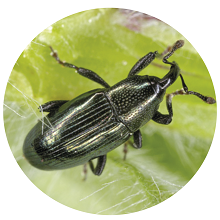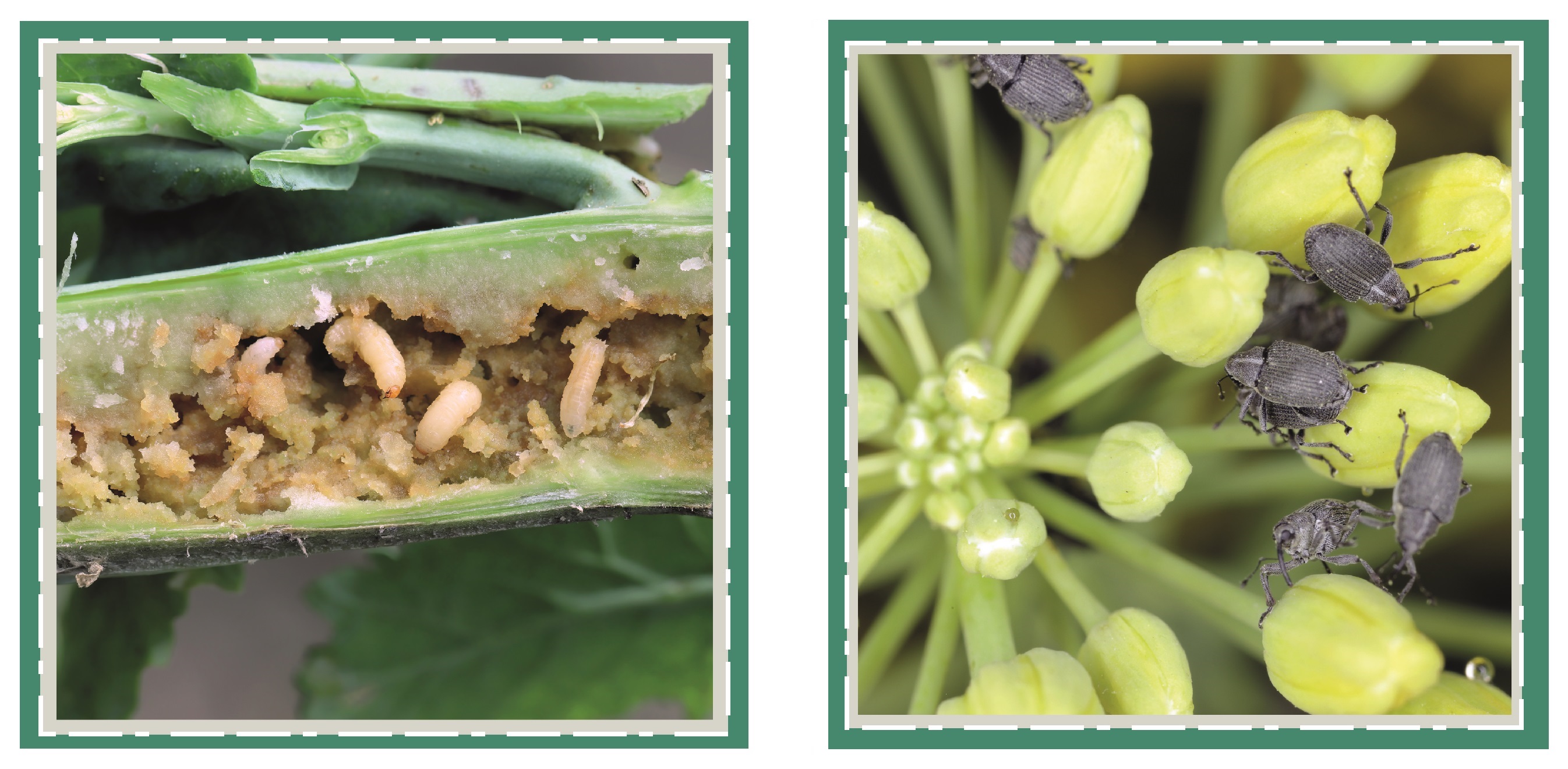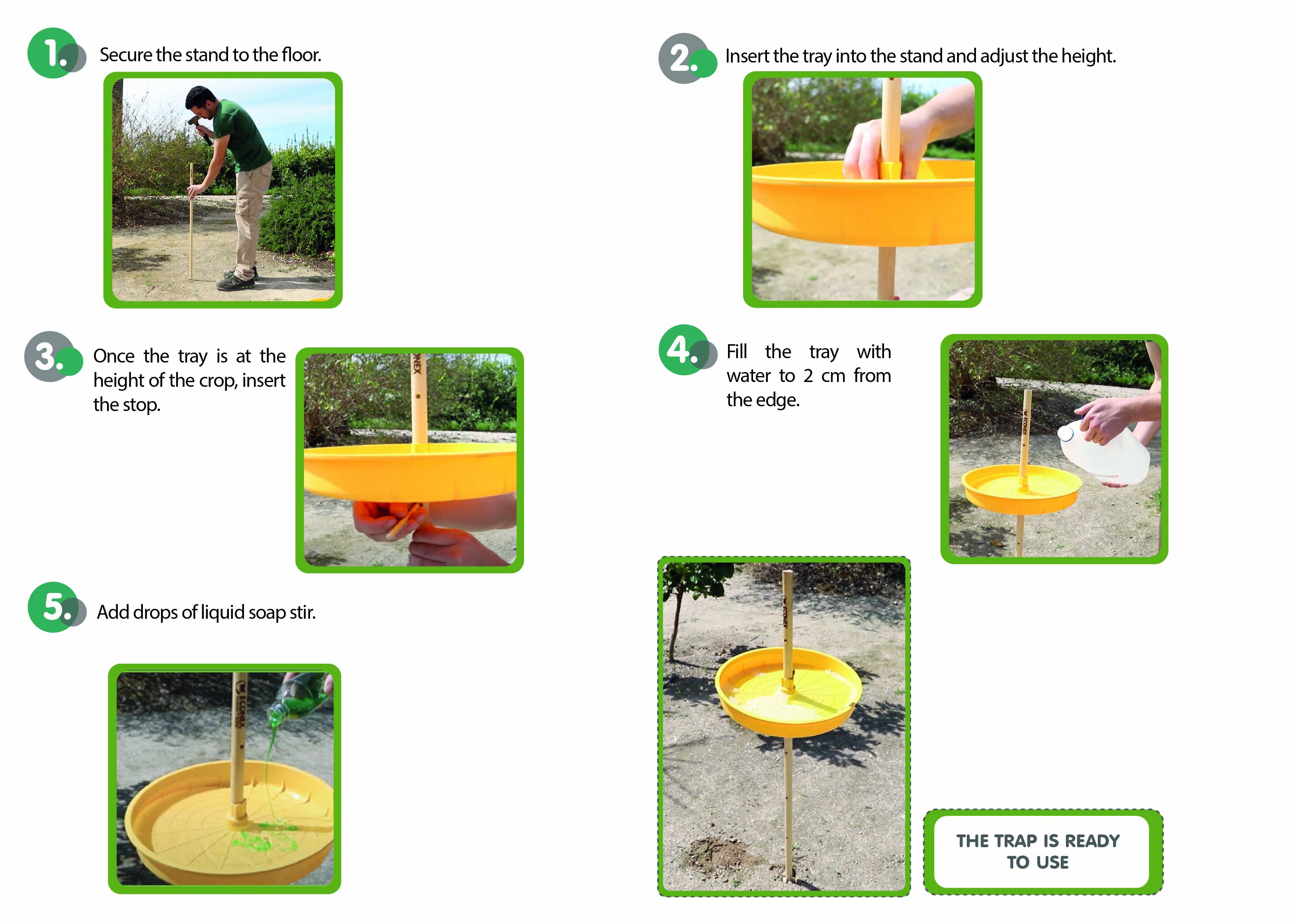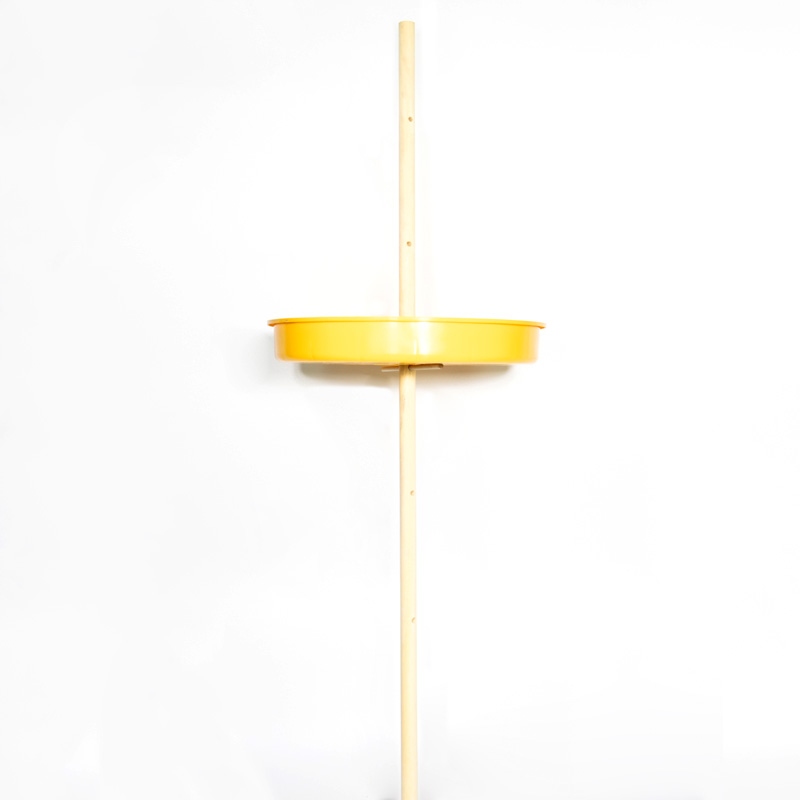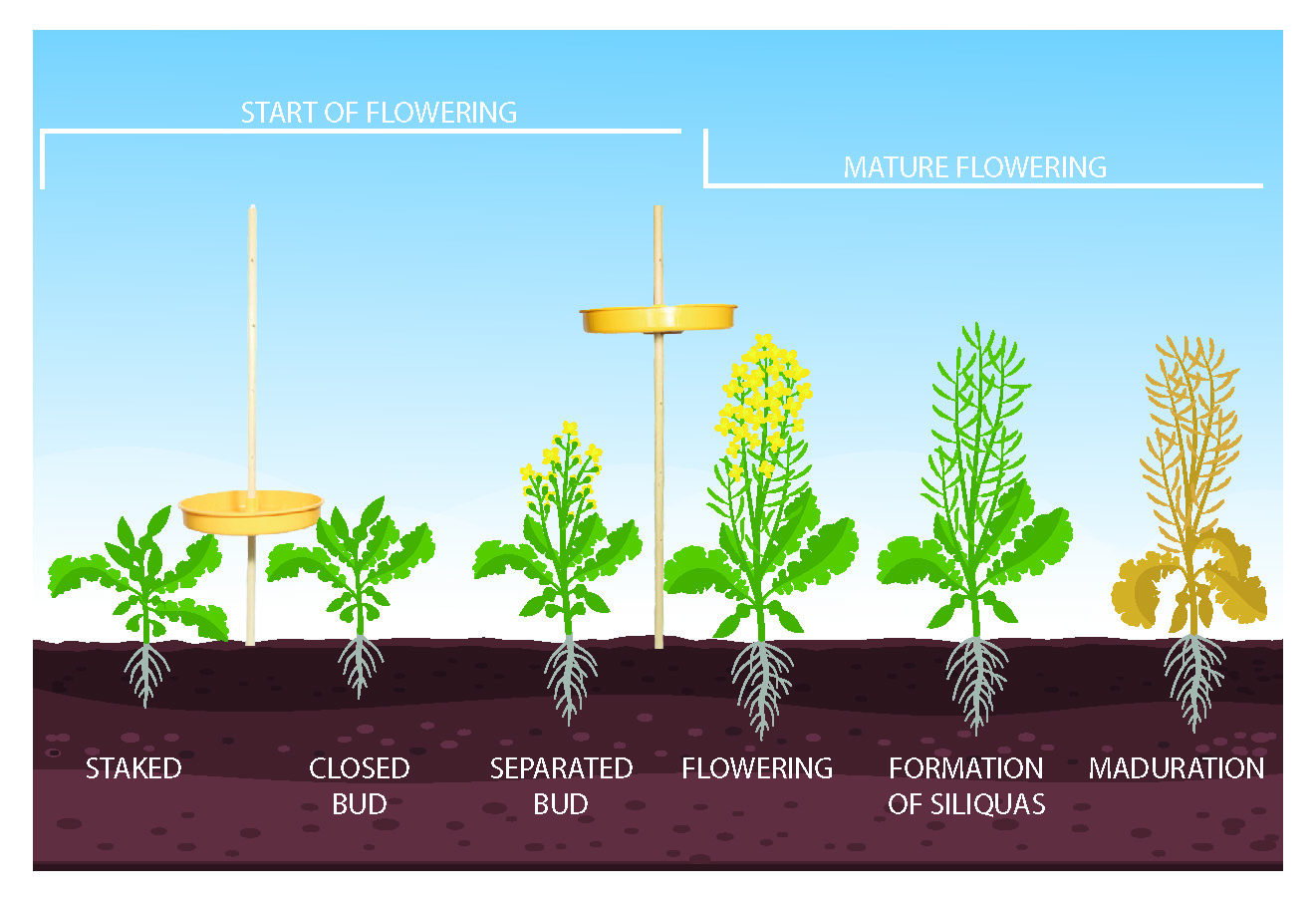Rapeseed is an oilseed crop that is becoming increasingly widespread in Spain and other countries such as France and Canada. Throughout its growth, this crop has to face a number of species of curculionid insects, coming from the genus Ceuthorhynchus.
Rapeseed can be affected at various stages of its development and in different organs. We find the winter stem weevil (C. picitarsis), stalk weevils (C. napi, C. rapae, C. pallidactylus) and pod weevils (C. assimilis, C. obstrictus).
Morphology and biology
The rapeseed weevil (Ceutorhynchus spp) is a small coleoptera of the Curculionidae family. Adults measure between 2 and 4 mm in length, have an oval, convex body and are blackish grey in colour. They are covered with fine scales, although the shade of their colour varies depending on the species, with greyish, black, brown, reddish or greenish varieties appearing. Their most distinctive feature is their elongated face (snout), which is thinner and longer in females, with antennae inserted at the end. The eggs, which are tiny and whitish, are laid in different parts of the plant depending on the weevil species.The larvae are legless, creamy white coloured, with a brown cephalic capsule. Likewise, they can develop in different parts of the plant, depending on the weevil species. They make galleries inside different parts of the plant, weakening it and facilitating the entry of pathogens.After several weeks of development, the mature larvae fall to the ground, causing the formation of the pupae inside the soil or among the fallen leaves, with some species remaining in a state of diapause, in which they do not cause damage to the crop. The new generation of adults will begin a new cycle, in whichthey will once again lay eggs, synchronised with the development of the plant.
Towards the end of winter, the adults of Ceutorhynchus napi and C. obstrictus begin their activity, coinciding with the sprouting and flowering phase. Ceutorhynchus assimilis flies in spring. In southern Europe, at the end of summer and autumn, adults of Ceutorhynchus picitarsis emerge..
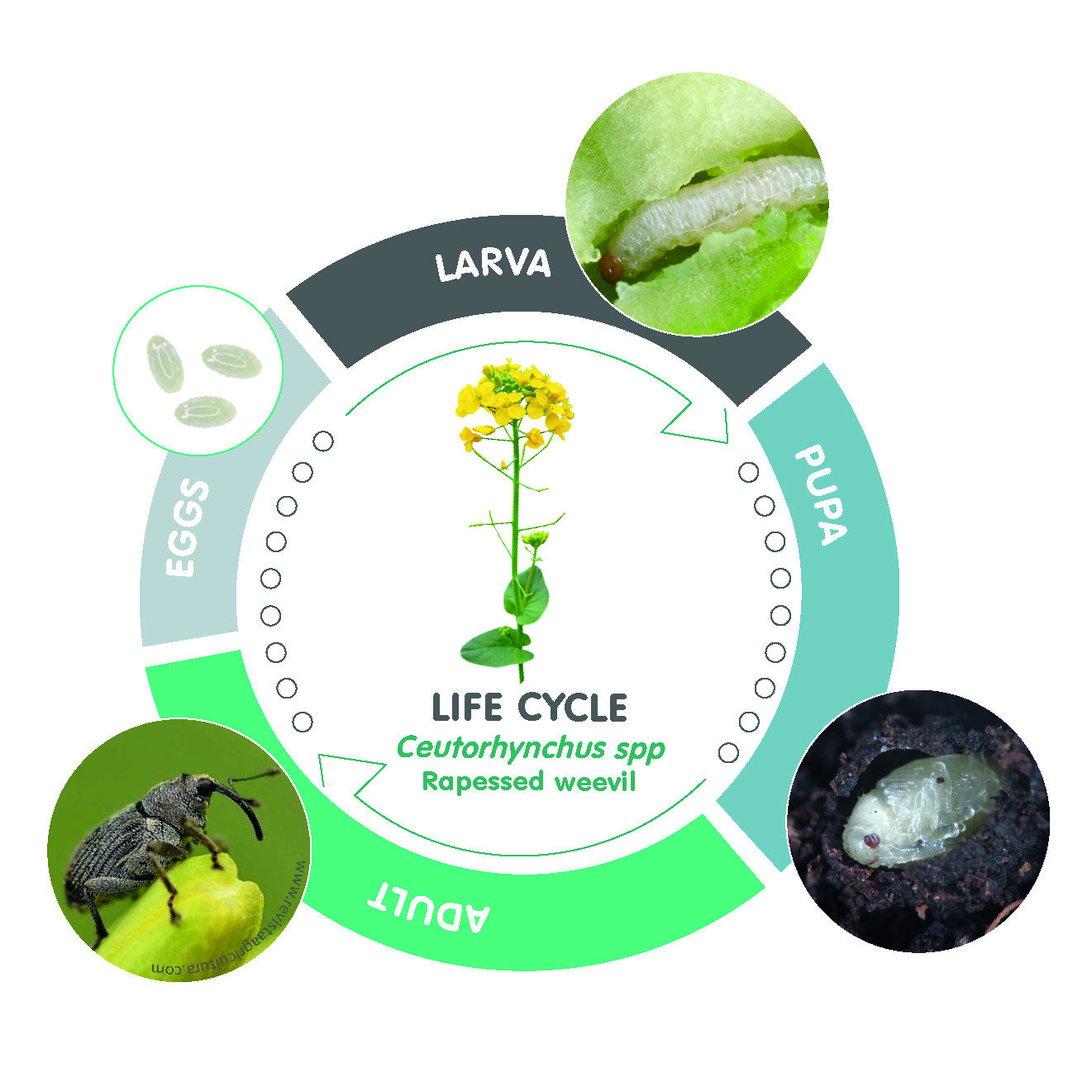
Damages
The damage is difficult to observe, so it is essential to use traps to detect the presence of the pest before it is too late.
Ceuthorynchus picitaris species, or winter stem weevil, lays its eggs in autumn. The larva devours the terminal bud and forces the plant to develop side shoots, delaying cultivation.
Ceutorhynchus napi is also known as the stalk weevil. It is the species that can cause the most severe damage. It appears at the end of winter, from February to March, when its flight starts and lays its eggs at the tip of the stem. The larvae bore tunnels into the stems, preventing the rapeseed from developing properly and causing significant losses in production. It can also affect siliquas.
The pod weevil, Ceutorhynchus assimilis, begins its activity in late March or early April. This weevil lays its eggs in the fruit. It is particularly harmful when associated with damage caused by the rapeseed mosquito, as the latter can use holes made by the rapeseed weevil to lay its eggs
